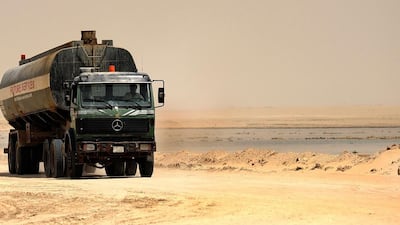Saudi Arabia and Kuwait have resumed oil production from shared oil fields located along their Neutral Zone after operations in the territory were halted five years ago.
Production from the Wafra and Khafji fields began on July 1, the Kuwaiti oil ministry said in a tweet on Monday.
Earlier this year the ministry announced it was re-starting production from the fields after reaching a deal with its neighbour.
The onshore Wafra field will initially produce 10,000 barrels per day before reaching 70,000 bpd by the end of August.
The field is expected to reach 145,000 bpd output by year-end, according to earlier comments made to Reuters by a senior management official at Kuwait Gulf Oil Company, which operates the field.
Production from the offshore Khafji oil field, which was halted for a month is expected to be producing at the rate of 80,000 bpd from July 1, before reaching 100,000 bpd after two months. The field is expected to maintain production of 175,000 bpd by year-end.
Both Saudi Arabia and Kuwait are currently cutting back output as part of the Opec+ agreement, which looks to restrict around 9.7 million bpd of production from the markets until July. The start-up of production from the shared oil fields provides additional spare capacity to the producers, in the event of a shortage.
Spare capacity refers to the volume of output that can be brought online within 30 days and sustained for a minimum of 90 days, according to the US Energy Information Administration. The world's spare capacity remains tight, hovering around 3.21m bpd in 2019, according to International Energy Agency, with 2.27m bpd in Saudi Arabia alone.


